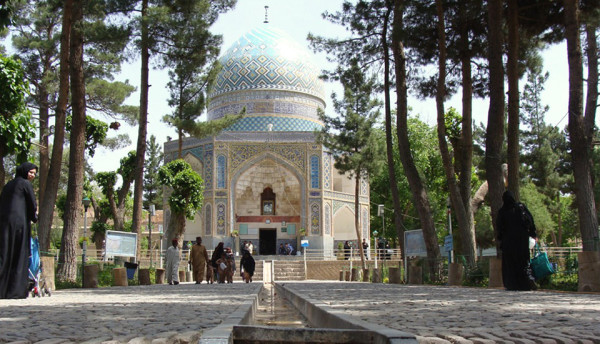
The Sacred Natural Sites Initiative regularly features “Conservation Experiences” of custodians, protected area managers, scientists and others. This post features the experiences of Ms. Maryam Kabiri Hendi who during her Master’s thesis at Tehran University worked on Land evaluation for conservation of natural sites with spiritual values in Iran. With the help of Associate Professor Mr. Afshin Danehkar also from Tehran Universty, she also translated the IUCN UNESCO core guidelines for protected area managers on sacred natural sites into Persian. Click here to read the full case study on “Land evaluation for conservation of natural sites with spiritual values in Neyshabur Township”.
Neyshabur is a township in North East Iran. A large part of it is located in a vast plain surrounded by hills and mountains. There are different sacred natural sites in the township, ranging from sacred trees and sacred springs to a sacred boulder and sacred gardens. The area houses several endemic plant and animal species. It also contains protected eco-tourism destinations such as waterfalls, springs, rivers and eye catching geographical features like mountain summits.

Qadamgah Garden in Neyshabur township at Khorasan Razavi province in Iran attrackts many pilgrims that follow the footsteps of the 8th Imam of Shiites, a male spiritual leader thought to be a descendant of Muhammed, divinely appointed to guide humans. The word Qadamgah means footprint and refers to this narration. Source: Maryam Kabiri Hendi, 2011.
Local people respect natural features as they are rooted in their religious belief. Qadamgah in Neyshabur for instance, is a Persian garden where nature has been imbued with spiritual values. It contains a mansion, trees, pools and streams. One of the walls of the mansion contains a black stone on which two footprints have been carved. People believe these prints belong to the 8th Imam of Shiites, a male spiritual leader thought to be a descendant of Muhammed, divinely appointed to guide humans. The word Qadamgah means footprint and refers to this narration.
Although there is formal management strategy, local people still conserve lesser-known sacred sites. Values of such sites are taught to the younger generations and religious ceremonies and practices are performed communally, as they have been for centuries. This way, the next generation learns to protect them.
The Iran legislation has no mention of sacred natural sites so far. Some sacred natural sites have been officially conserved because they are located in protected areas or in a national monument. Others have been specifically registered as national natural monuments. The Cultural Heritage and the department of the environment authority have a say in the protection of national natural monument. They advocate mainly for rare flora and fauna or remarkable land formations, landscapes or even ancient trees. They are then brought under protection by designating a suitable perimeter.
If sacred natural sites they are to survive, current measures need to be supported by legal protection. For this purpose, taking an integrated approach based on joint criteria and policies in the fields of nature and culture can play a key role in the conservation of sacred natural sites. Kabiri Hendi (2011) identified such criteria for the conservation of sacred natural sites in the township of Neyshabur, read more.






